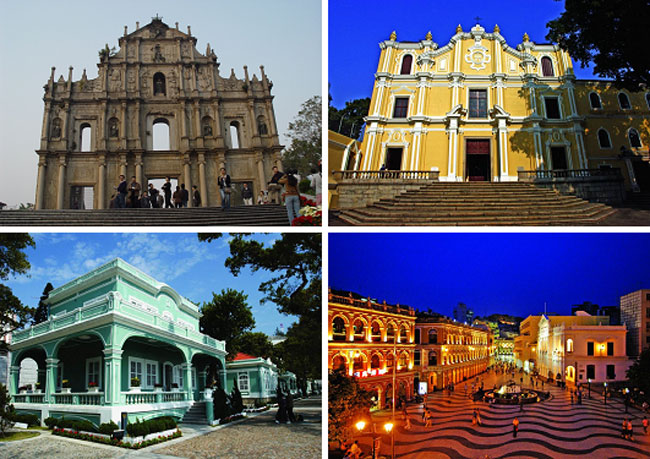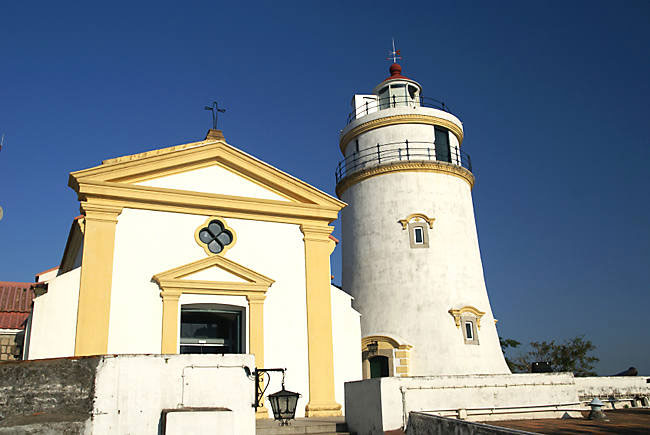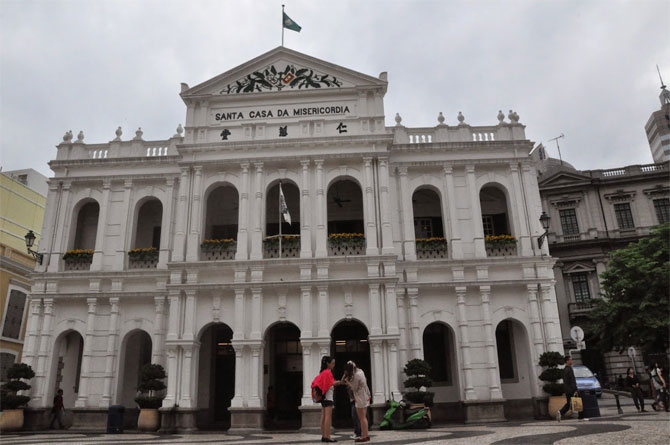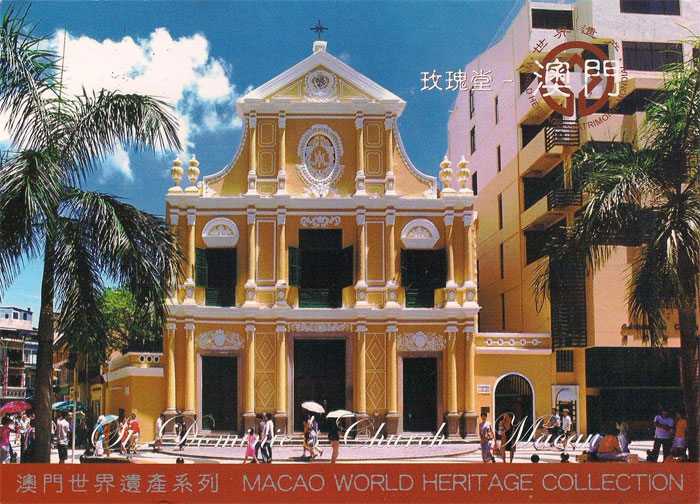Macau historical center
Unesco's Scientific, Educational and Cultural Organization has recognized the Macau Historical Center as a World Cultural Heritage in 2005.

In the middle of the 16th century, the Portuguese invaded the land of Macau and began building commercial buildings in the southwestern part of the peninsula. Macao soon developed rapidly and became a major port in China. It is also one of the first Chinese ports to open to the outside world before the 19th century. It is also one of the important international harbors in Asia.

With the prosperity available in international trading business and rich land, Macao attracts many people to settle down from many countries around the world. These settlers bring their culture, social customs, and religion. So it is easy to see the residential areas, the market has many different architectural styles, many churches and temples of different religions are also found to appear in Macau. The area consists of many temples, ancient houses, ancient streets in Macao are also the architectural works of what is now known as the historic center of Macao .

If foreigners come here to introduce the culture of their country, Chinese people living in Macau also through these settlers introduced Chinese culture to the world. Macau is therefore considered a window for foreigners to know about China, and it is also the land that China meets the cultures of the Western world.
For over 400 years, Macau has been a land of intersection between Western and Eastern cultures . At the Macau Historical Center, one can find the ancient architecture of both the West and the East. Besides, there is also the architectural style of Renaissance Baroque to neoclassical.

Architects today realize that the architecture at the Macau Historical Center represents the architecture that blends many different religious backgrounds . The architects of that period were Westerners but after a period of time living on this Asian land absorbed Chinese and Indian culture thereby creating a unique architectural style for the island. this island.

 The streets have a mixed architectural style between China and the West.
The streets have a mixed architectural style between China and the West.
Chinese temples, pagodas and Western-style buildings make Macau's historic center so diverse. The rest of the architecture to date is a number of Portuguese-built churches, a Chinese residential area, a Square and a combination of East and West, Moorish Army Camp, Dom Pdro V Theater , Ho Tung Library, Leal Senado Buildings, Holy Mercy, Guia Lighthouse .




So far Macau is still one of the important centers in China's international trade development strategy. Macau is especially significant because it is a testament to the first and the longest meeting between China and the West. The Macau historical center is recognized by the Unesco as a World Heritage by the criteria (ii), (iii), (iv).
Criterion (ii): Macau's strategic position on Chinese territory and the special relationship established between the Chinese and Portuguese authorities are testament to the exchange of science, technology and literature. chemistry between the East and the West.
Criterion (iii): Macau is the only evidence for meetings between the West and China, which is also the longest combination of Chinese history. During the four centuries from the 16th century to the 20th century, Macau was the focal point for merchants and missionaries to meet and exchange cultures with each other.
Criterion (iv): Macau is a prominent example of an architectural complex that illustrates the development of a combination of Western and Chinese for four centuries, where it is kept between ancient buildings. of China and Portugal.
Criterion (vi): Macau is involved in the exchange of cultures, spirituality, science and technology of the West and China. The ideas directly motivated the development of this land since its establishment until now.
- Storm No. 3 will cause rain in the North
- Riga historical center
- Historical center Bridgetown and Garrison - World cultural heritage in Barbados
- Historical images cannot be forgotten about Tax Trade Department
- China opens the world's longest seaport bridge, connecting Hong Kong and Macau
- Historical center of Vienna
- 11 famous historical events thought to be real but were fictional
- 5 famous historical places are haunted
- Surprised with rare historical series hard to find
- 15 impressive historical moments
- 4 historical facts that many of us don't know about
- Italy inspired a strong historical earthquake
 Suzhou classic bonsai garden - China
Suzhou classic bonsai garden - China Chau Nguyen Dynasty
Chau Nguyen Dynasty Thai Son Mountain - World Wonder
Thai Son Mountain - World Wonder Ancient villages of Shirakawa-go and Gokayama
Ancient villages of Shirakawa-go and Gokayama